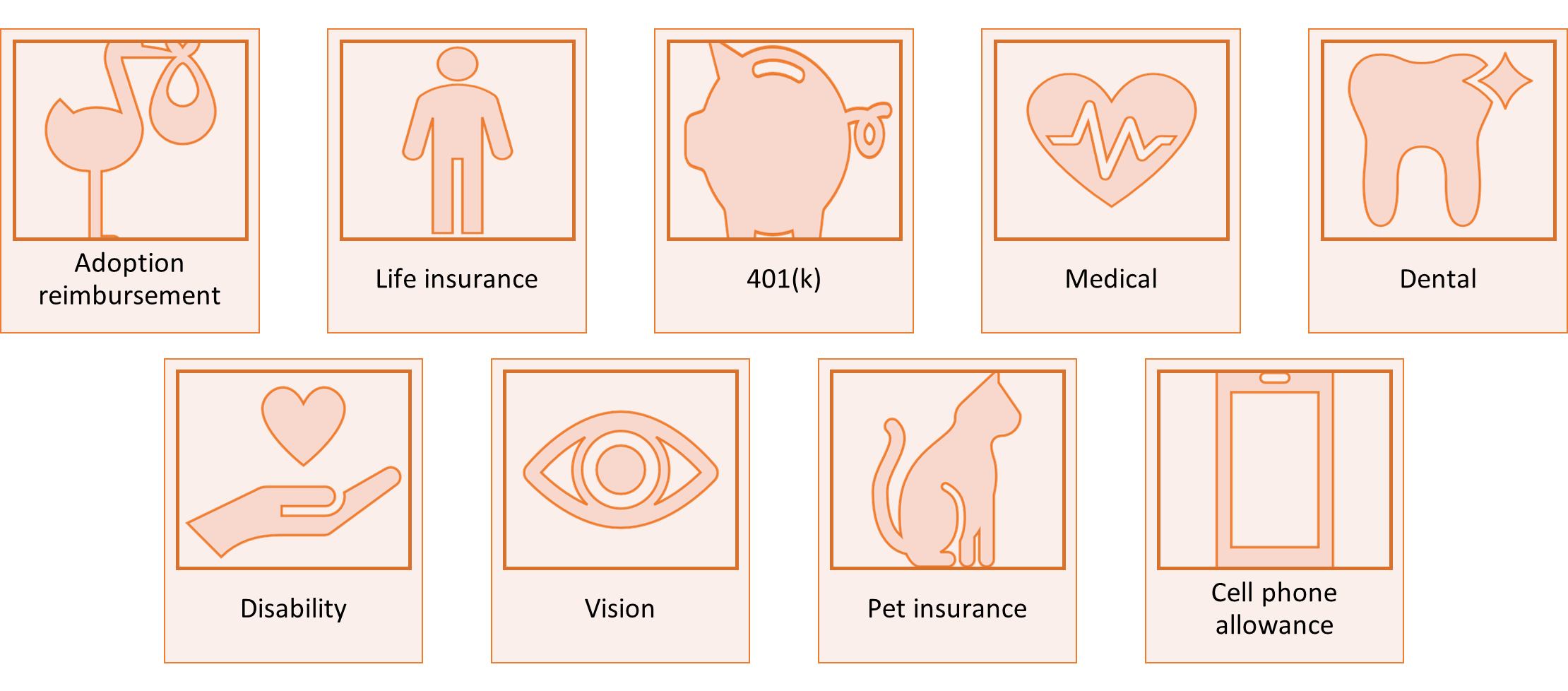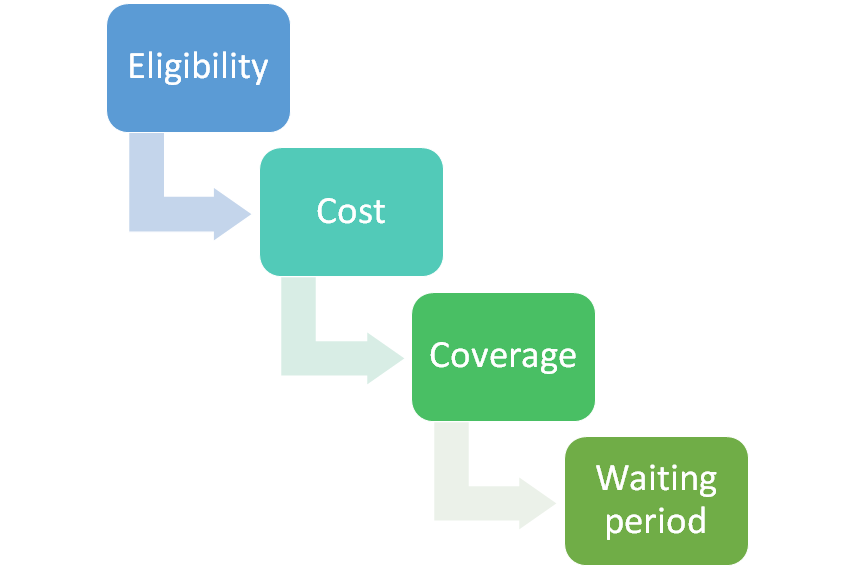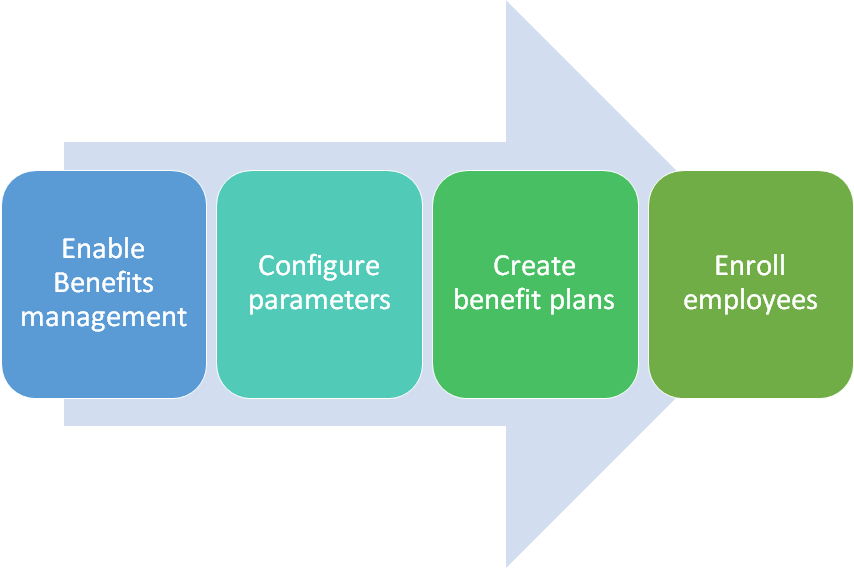Overview
Benefits management enables your organization to provide different types of benefit plans to help attract and retain a strong workforce. With the flexibility that is provided by Benefits management, you can offer and manage almost any type of benefit that you can think of for your employees.
Considerations
There are several considerations your organization should consider before configuring benefit plans you will offer employees. Some of these factors are mandated by law, and others are mandated by your organization's policies.
Ask yourself the following questions when assessing the parameters for setting up the benefit plan:
Eligibility - Will you include full-time or part-time employees or employees at certain job levels? For example, medical plans are generally available only to full-time employees.
Cost - What does the benefit cost for both employee and employer? For example, employees and employers usually pay a portion of medical insurance premiums.
Coverage - Will the benefit cover only the employee, or will it cover the employee plus one or the employee plus family? For example, medical plans can cover the employee plus family.
Waiting period - Is a waiting period of 30, 60, or other number of days imposed? For example, most employees can enroll in a medical plan when they start employment.
In addition, you'll need to consider whether employees can enroll in more than one plan of the same type. For example, your employees probably won't be able to enroll in more than one type of medical insurance, but they could possibly enroll in multiple life insurance plans.
Who receives benefits
Almost all employees, and some of their dependents, can receive benefits. Recipients are divided into two categories:
Dependent - Covered by the plan (for example, dental, vision, or medical insurance).
Beneficiary - Receives a payout from the plan, even though they're not directly covered (for example, life insurance).
Examples of who might be able to receive benefits under your plans:
Active full-time employees
Dependents of employees
Retired employees
Dependents of retired employees
Part-time employees
Dependents of part-time employees
Disabled employees
Dependents of disabled employees
Survivors of deceased employees
Employees who have terminated employment
Dependents of employees who have terminated employment
Employees who are temporarily separated from employment (for example, on family leave)
Dependents of employees who are temporarily separated from employment
Benefits eligibility and start dates depend on the type of worker, as described in the following table.
| Worker type | Description | Dates used for eligibility |
|---|---|---|
| Existing worker | Employed before the benefit plan period. For example, if the benefit plan period is 1/1/2021-12/31/2021, the employee's start date would be before 1/1/2021. | Worker compensation, employment details, and position information are read as of the beginning of the plan period. |
| New hire | Hired during the benefit plan period. In this case, the employee would be hired between 1/1/2021 and today. | Employment details and position information are read as of today. |
| Future hire | Hired in the future. In this case, the employee would be hired between today and 12/31/2021. | Worker compensation, employment details, and position information are read as of a future-dated start date. |
Two benefits workspaces in Human Resources
Companies often require a more flexible system with a smooth open enrollment process and support for qualifying events and complex rates.
The Benefits management workspace provides the following options:
Open enrollment
Rate tiers (for example, different rates by age or salary)
Qualifying life events (for example, adopting a child or getting married)
Process for setting up a benefit plan
When configuring benefit plans in Finance and operations apps you will need to configure the following tasks in order:


